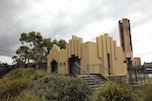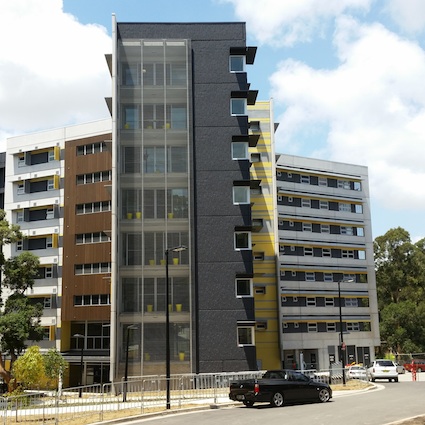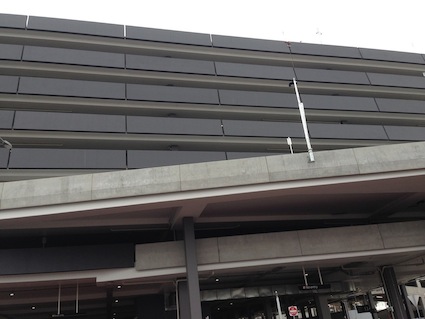

Have colours and Product been formalised into a solid specification?
It is good practice to make sure all ‘grey areas’ and uncertainty are removed from the specification. If there are gaps in the specification, find out from the architect or specifier, or check with a Keim Representative if unsure.
Be aware of the specifier’s intentions for the project. Address the major issues first, and follow up on smaller issues later.
Have site samples been trialled? Have site samples been applied on all varied surfacing?
If you haven’t applied site samples, double check to make sure that all samples have been documented as to what has been placed where. Photo evidence with relevant emails and email dates are good to keep a record of.
If possible, check over samples before project starts to make sure that the application and product choice is correct. Variable porosity, questionable substrates, positioning and surrounding areas can all change the scope of what products should be specified.
Is there a need for any patching or remedial works?
If so, ensure all patching compounds used on concrete and render are to be cementitious or highly cementitious. Products such as the Parchem Renderoc System (High build and Fairing coat) and the Aftek System (High build and Fairing coat) are recommended. This is mandatory for Concretal Lasur as the product is totally penetrative & will not bond well to acrylic materials. Please be aware that Concretal Lasur will not help smooth the appearance of poorly feathered edges, rough patching or variations in surface texture due to patching.
Keim Royalan will help to hide some feathered edges, if generally no greater than 0.5 mm.
The use of Keim Contact Bridging Primer in the first coat of Royalan can help to hide varied textured substrates. This caters for up to 0.75mm.
Is there a need for caulking compounds to be used?
As Mineral Paints and Mineral Stains are not designed for adhesion to non-cementitious caulking compounds, it is highly advisable to choose a caulking colour that is sympathetic with the final finished colour to be applied.
If possible, caulking should generally be applied after the application of Keim Lasur. This will ensure the Lasur has the cleanest possible surface to adhere to, without any traces of contaminating material.
Is there a variation in surface texture that needs to be rectified?
This will need to be done before application of a mineral paint system.
Concretal Lasur is a non film-forming stain. When penetrating in to the surface, it does not fill any cracks, dents, chips, aeration or honeycombing.
Keim Royalan will help to hide some feathered edges, if generally no greater than 0.5 mm.
The use of Keim Contact Bridging Primer in the first coat of Royalan can help to hide varied textured substrates. This caters for up to 0.75mm.
A cementitious fairing compound such as Renderoc FC can be applied over concrete, fibrous cement sheeting and most masonry.
Is there an existing paint system or sealer already present on the surface?
Most sealers will stop appropriate bonding or silicification of a mineral based paint system. If unsure whether there is a sealer on the surface of the substrate, lightly mist the surface with water until just damp, and check for the presence of water beading, or water drawing into certain substrate sections and not others.
Acrylic sealers and water-based membranes will only allow for Royalan with Contact Bridging primer to be applied to the surface, but not Lasur.
Solvent based or Epoxy sealers will stop adhesion of both the Keim Concretal Lasur and Royalan Systems.
Is there any marking or staining on the surface?
Be aware that certain types of staining such as rust/oxide staining, tannin staining, and oil and grease staining, although small, may still bleed through a porous and breathable coating such as mineral paint.
Rust and oxide staining should be removed via the use of an oxalic acid-based cleaner, with all residual amounts of cleaner removed afterwards with fresh clean water.
Be aware that exposed ironwork, copper and copper sheeting, exposed steel, and overhanging trees are all liable to stain a breathable coating system such as Keim mineral paint over time, if not cleaned on a regular basis.
Has Painter, Renderer/Formworkers and Builder been informed of product details via spec sheets, Technical sheets, MSDS and Brochures?
Has pricing been forwarded through to the relevant parties?
It is always good practice to have the builder and painter informed of the costs or potential costs before the project gets to the application stage.
Has the Surface been cleaned?
Oil, Grease, Silicone, Bond Breakers and Form Release agents will severely hamper the adhesion of Mineral Based paints and stains.
Mould, mildew and algal bloom will also affect adhesion, but also pose a danger of re-occurring if the spores have not been removed.
Concrete laitance or chalky surfaces will also affect proper adhesion. Chalkiness and dusting should be stabilised via removal. If surfaces still remain chalky after a wash down, a suitable fixative such as Keim Concretal Dilution, Pure Mineral Fixativ or a consolidating agent such as Keim Silex – OH, may need to be used.
Will there be Scaffold tie-ins that will need to be touched up at a later stage?
Removal of Scaffolding from already painted walls will sometimes leave holes in the façade where tie-ins were used.
All patching should be done with a cementitious filling compound, such as the Renderoc and Aftek patching systems.
Keim Royalan is much easier to hide patching sections, although it is still recommended to try and touch up from a hard edge or corner to the same on the other side.
Keim Lasur may prove difficult to touch up, especially with the lower opacity mixes. Any overlapping of new painting on to old painting will increase the opacity, showing a distinct colour difference. Due diligence will be needed to apply Lasur in these sections without excessive overlap.
For jobs using an epoxy-filling compound such as Chemset, a 3rd of the total volume of fine silica sand should be added to the patching mix.
Is there a presence of excessive moisture or salt efflorescence on the surface?
These surfaces should be addressed for salt removal with clean water.
All water ingress sources should be rectified prior to painting and allowed to dry out thoroughly. Certain areas especially in older buildings may need to be treated with an injectable liquid silica to treat rising damp.
Certain substrates that have excessive salt build up and ingrained salt may need to be treated with a poultice to draw out salt e.g. Westox Cocoon.
Are there any areas to be coated that are liable to hold pooled water - such as flat parapets, windowsills, plinths or footings?
Horizontal areas to be painted with Mineral Paint Systems, that are liable to hold pooled water, should be treated with Keim Silanegrund before application.
This will add extra water repellency and stop pooling water from sitting between the breathable coating layer and the substrate.
All Keim coatings should be applied between 4 to 24 hours after the Silane primer has been applied.
A silane treatment can be applied after the mineral paint has been applied.
Keim Silane 100 can be applied post application of Keim Mineral Paints after approximately 2 weeks of curing time.
Be aware that visually this may change the look of the Keim coating when the surface becomes wet with rain or moisture.
Have quantities estimated for coating been double-checked?
Be aware that mineral oxide batches can vary ever so slightly from batch to batch. Although we ensure that every batch that leaves our factory is quality controlled for colour accuracy, minor discrepancies can occur.
It is always best to make sure all paint for the final coating is from the same batch and production date, and that drums have been boxed together to allow for standardising of colour between different drums.
Have Coverage rates been adjusted for textured surfaces and/or form liner panels spraying?
Textured surfaces and spraying generally mean that more paint will end up being used.
Spraying can end up using up to 20 % more than standard rolling application.

